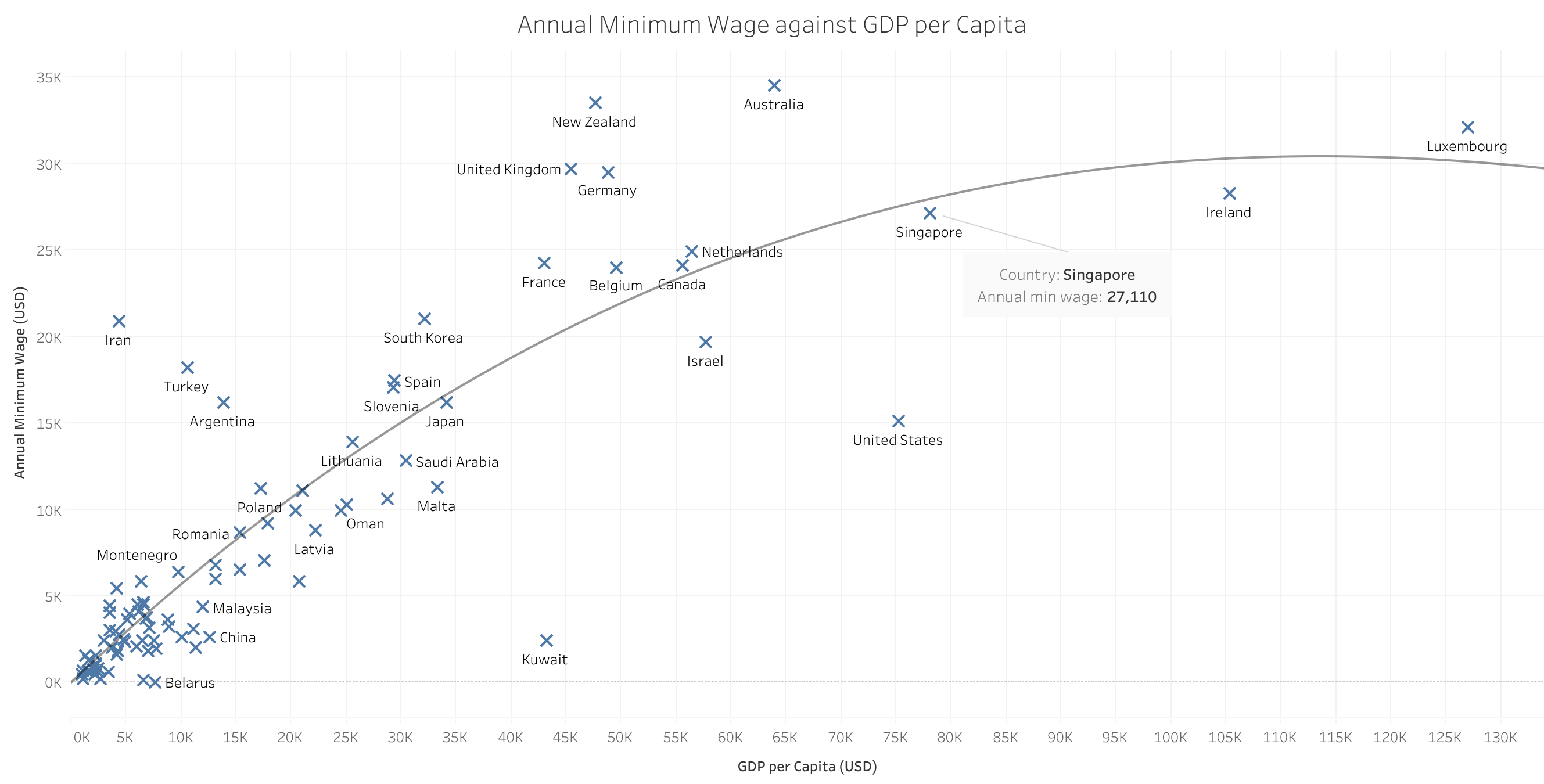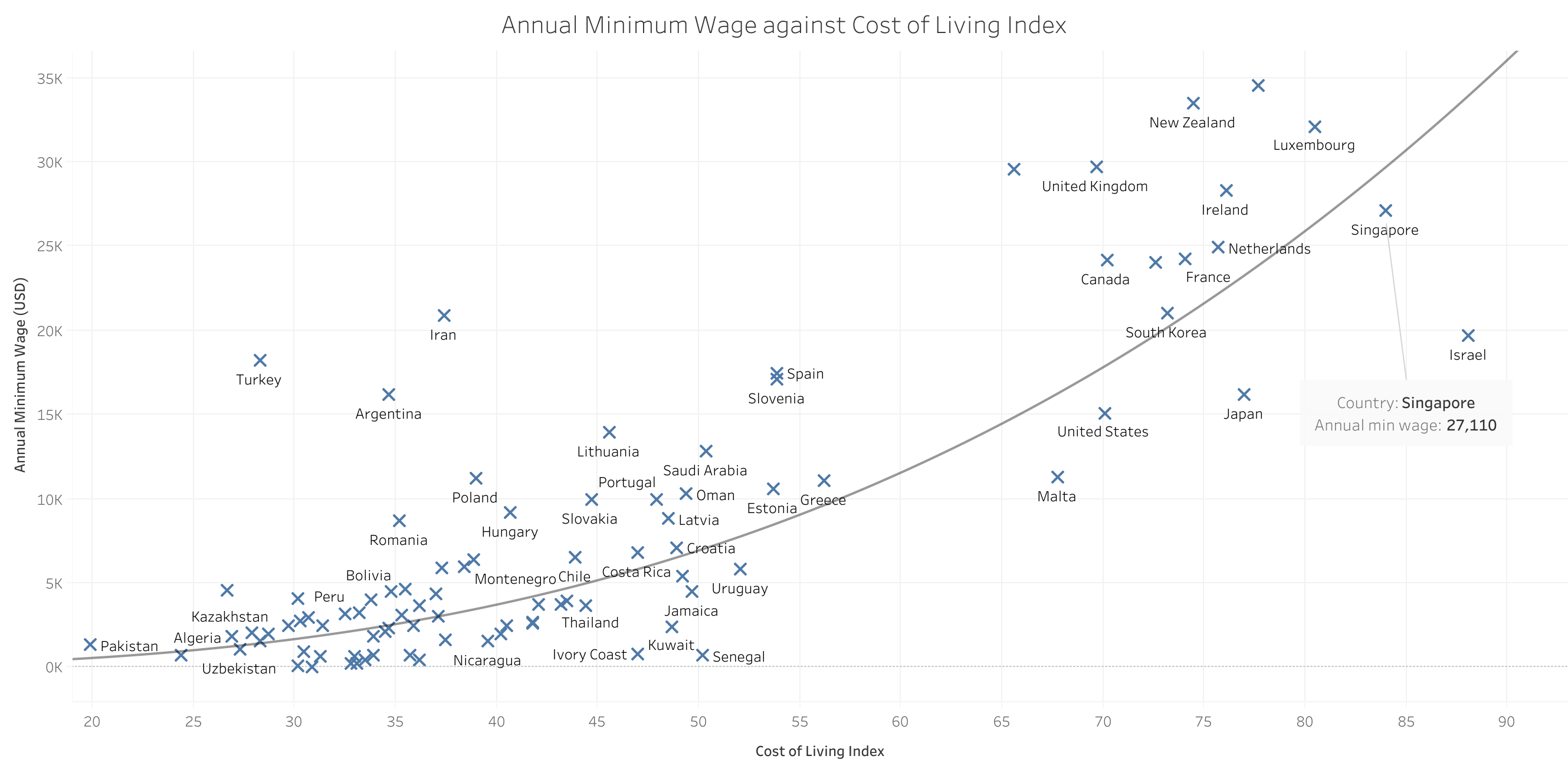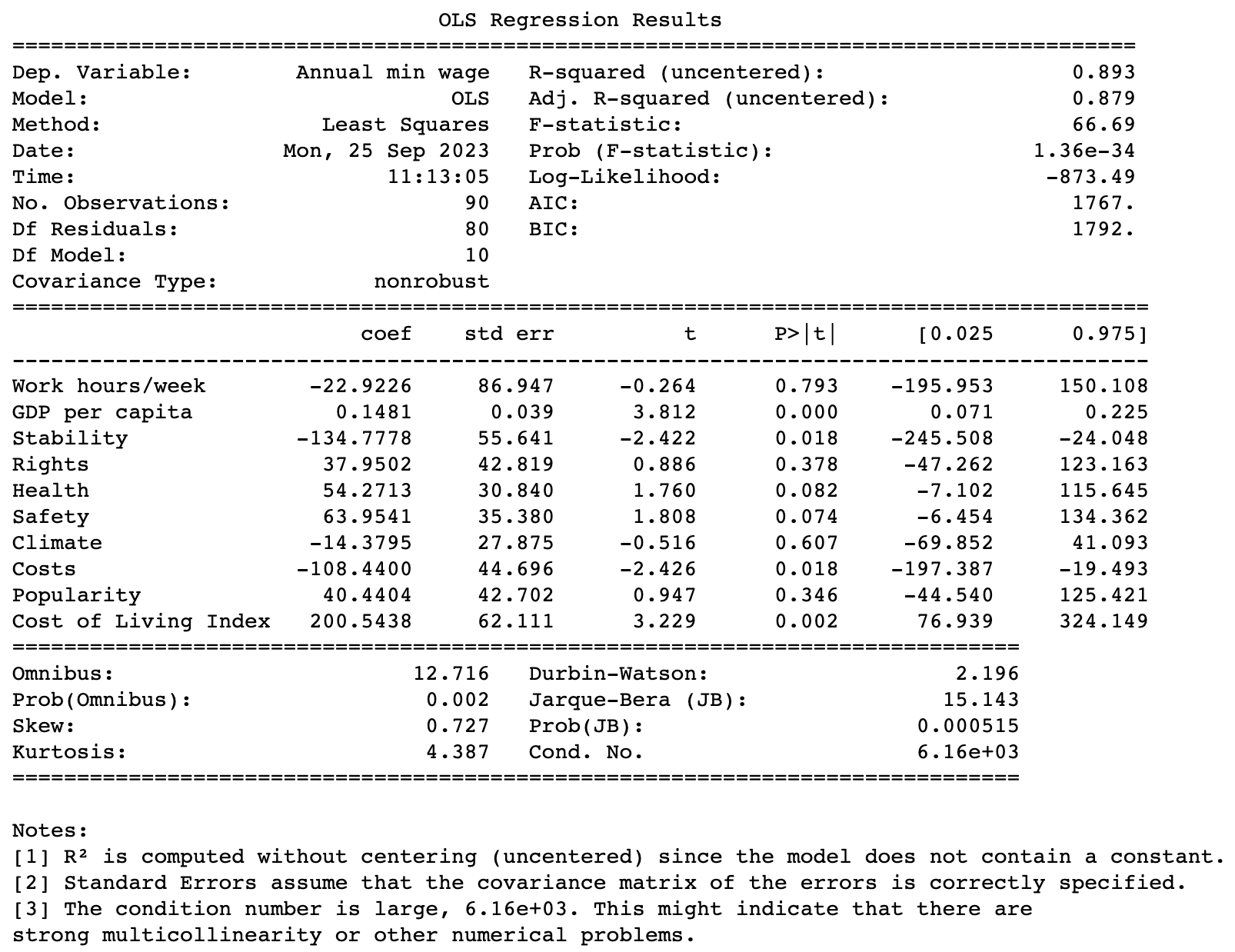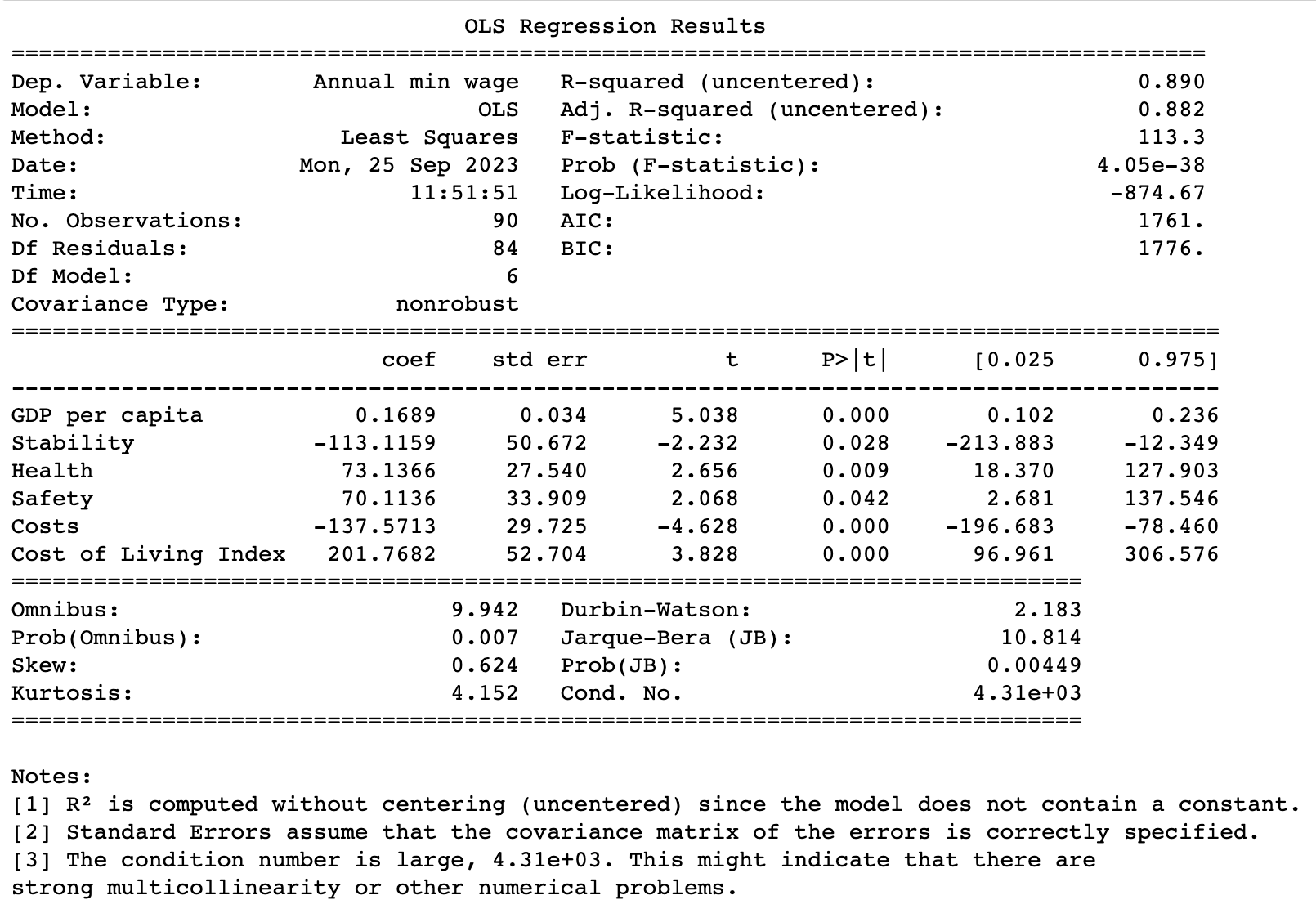What might Singapore's Minimum Wage look like?
Using Machine Learning and Stepwise Regression To Predict Singapore's Minimum Wage
Skills: Python, Scikit-learn, Tableau
Singapore lacks a government-mandated minimum wage, relying instead on market-driven wages to incentivize productivity. This mirrors the country's deep-seated value of meritocracy. In 2018, Oxfam ranked Singapore 149th out of 157 nations concerning efforts to reduce inequality and bridge the rich-poor gap, pinpointing the absence of a minimum wage as a causative factor. This sparked debates on whether a minimum wage is essential to combat inequality. Despite public calls for wage protection, Singapore has been adamant about avoiding minimum wage policies, promoting the Progressive Wage Model to encourage skill upgrades. The 2020 elections amplified this conversation, with opposition parties like the Workers Party suggesting a $1,300 monthly wage. Critics argue this challenges meritocracy and risks automation of low-skill jobs. While we don't aim to persuade, it's crucial to recognize that for many, poverty isn't a choice, and wage significantly influences one's living standard.
We might not be economists, but we're intrigued by the potential impact of minimum wage on society's most vulnerable members. Singapore's former Prime Minister, Mr. Lee Kwan Yew, championed a meritocratic system, urging Singaporeans to strive through hard work. This ethos transformed Singapore rapidly, but also spurred debates about the causes of poverty. Instead of associating words like "lazy" or "incompetent" with poverty, it's crucial to recognize the complexities behind it. Poverty, often a cyclic challenge, hinges significantly on wages. When earnings don't cover essentials, it pushes individuals below the poverty threshold.
In our analysis, we collected data from Wikipedia and World Data, focusing on minimum wage, cost of living, and quality of life metrics of 90 countries. The quality of life index encapsulated key areas such as Stability, Rights, Health, Safety, Climate, Costs, and Popularity. We utilized a linear regression model to analyze these indicators, specifically employing Singapore's statistics as benchmarks. This model, crafted using Python's sklearn library, aimed to predict Singapore’s minimum wage. Our model estimated Singapore's annual minimum wage at US$27,109.85 (SG$3088.47 per month). A comparative glimpse is presented in the ensuing graph.


To better understand the variables affecting Minimum Wage, I will incorporate a stepwise regression to identify variables that are statistically significant. (Stepwise regression identifies key factors influencing an outcome by eliminating insignificant variables. In this method, variables with high p-values, which don't significantly improve prediction accuracy, are removed. For this case, I will deploy backwards elimination approach, where all variables start included, and the least impactful one is discarded iteratively until only significant factors remain.)
Using the "statmodels.api" library, I created a function which grabs varaibles, and fits them into an ordinary least squares linear model. The statistics summary is then printed out, as shown below.

The "P > |t|" column indicates the p-value for testing the null hypothesis. Using the assumption that coefficients with p-values below 0.05 are statistically significant (therefore suggesting a meaningful impact), I will exclude the variable with the highest p-value (in this case will be "Work hours/week") since it isn't statistically significant. I will repeat this process until all p-values are below 0.5 (See below).

Finally, we find that there are 6 variables left, namely GDP per Capita, Stability, Health, Safety, Costs and Cost of Living Index. Since each of the p-values are below 0.05, all of these variables are said to be statistically significant. Using this new set of variables, a linear model is produced to predict Singapore’s minimum wage. The updated Annual Minimum Wage is USD$27,848.98 (SGD$3172.68 per month).
“The goal is to turn data into information, and information into insight.” ~ Carly Fiorina, former CEO of Hewlett-PackardWe utilized Python and implemented stepwise regression to navigate raw data, offering us both anticipated and surprising insights. While the relationship between minimum wage and indicators like GDP, and Cost of Living was expected, discovering the significance of Health and Safety was revelatory. Admittedly, the correlation between Health/Safety and minimum wage perplexed us. Although we might not fully decipher this relationship, it underscores the potential depth and nuances within our data, suggesting avenues for further exploration. In essence, our mission is to leverage data not just for its inherent value, but to spark meaningful dialogue and informed decisions.
Please see code availiable here.
